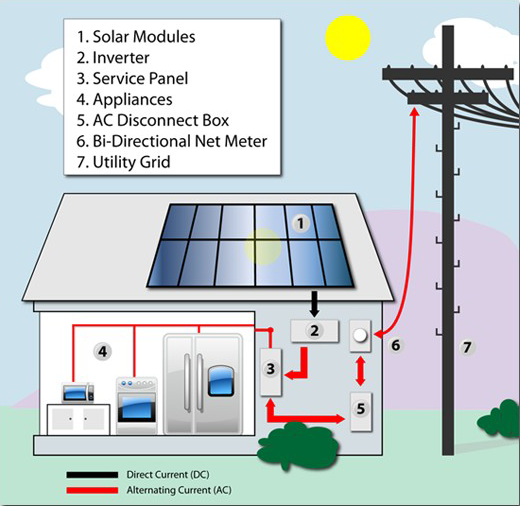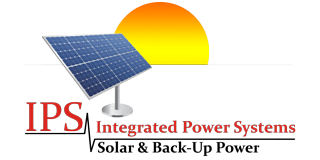The Basics of a Grid-Tie System

1. Solar Modules
Solar modules convert sunlight into DC electricity
2. Inverter
The DC electricity is sent to an inverter which converts
it into AC electricity. This is identical to the electricity being sent
to you from the utility company.
3. Service Panel
The service panel receives the AC electricity from the inverter and then distributes it to any loads in your home.
4. Appliances
Regular home appliances
5. AC Disconnect Box
A utility company required disconnect box.
6. Bi-Directional Net Meter
When excess power is produced by the solar panels, the power will flow into the grid through your electric meter. You are now “legally spinning your electric meter backwards“. Smart meters are Grid-Tie ready.
7. Utility Grid
The utility grid automatically provides electricity when needed – at night and during the day when your demand exceeds your solar production.

And How Does The Billing Work?
Both BC Hydro and Fortis BC calculate net metering based on 2 time frames:
1. Billing Periods
During a billing period, if your system produces more energy than you use, then a kW credit will carry through to the next billing period. Let’s say you produce 2600kW and use 1600kW in a billing period. You will not be charged for power usage and a credit of 1000kW will carry forward to the next billing period. Then maybe the weather turns ugly and you produce only 500kW but use 2500kW. With the credit applied, you would be billed for 1000kW.
2. Annual Reconciliation
Once a year, on the anniversary date of your Grid-Tie system start-up, the utility company will add up how many kW’s your system produced and subtract your energy usage. If you have a credit and depending on the utility company, you may be issued a check.
Contact us today to learn how a grid-tie system can save you money and increase the value of your home!
Phone: 250-769-2843
Email: Sales@ipwr.net
